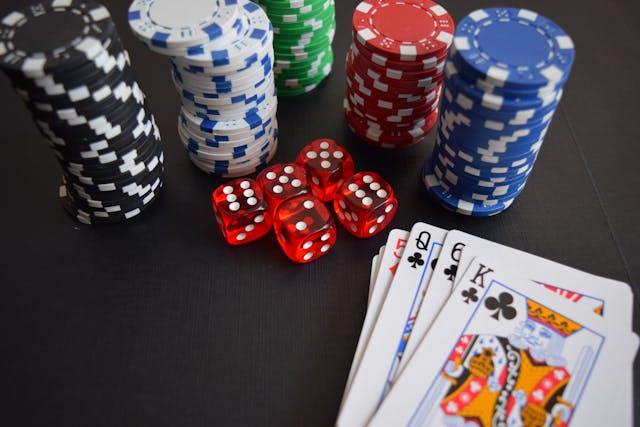
Source: Pexels
Have you ever watched poker on Twitch or TV and realized how most no-limit hold’em hands contested heads-up after the flop? After one player opens with a raise, the other calls, after which they both begin to battle for the pot.
It is no different in online poker. But if you are wondering how to take advantage of a position to dominate the table, you have just arrived in the right place.
And for those who have played for some time, you can agree that position cannot be ignored in online poker gaming. In fact, even in Texas Hold ’em, players have to mention their position before revealing their cards, showing how understanding position is important.
Therefore, in this article, we will explore how important the position is in online poker and uncover some amazing facts to enhance your gameplay. Why don’t you stick around and discover a few more things?
What are the different positions of poker gaming
Well, depending on the format and circumstances of a game, it may be possible for players anywhere between two and nine to participate at a table. But in most cases, you’ll either find 6-handed or 9-handed table games.
For the 6-table format, the positions will include:
- Under the Gun
- The Middle Position
- The Cutoff
- The Button
- The Small Blind
- The Big Blind
On top of these six seats, the 9-handed table adds the following:
- UTG + 1
- UTG + 2
- The Lowjack
Under the gun (UTG)
This is the tightest position to be in as you have little information about all other players on the table, which might require you to play conservatively. UTG is directly to the left of the big blind.
UTG + 1
Although the UTG + 1 is usually the second to act pre-flop, it is not much better than the first position. You only get to see one player act; the other seven can still act behind you. This position still requires players to play relatively tight, even though they can have a few more hands.
UTG + 2
At the 9-handed table, the UTG + 2 and the previously mentioned positions are usually considered the hardest ones to play before the flop. The simple reason is that you have the least information about opponents, and limiting the range to about 15% can be a great way to get started.
Some players refer to the UTG + 2 as the middle position, not really the middle of the table, but the position between the early and late positions.
The Lowjack (LJ)
If you have played in both 9-handed and 6-handed tables, you must have noticed that the Lowjack in the 9-max table is similar to the UTG in the 6-handed table. Even though you still need to be tight at this seat, you can use more hands than in previous positions.
The Hijack (HJ)
At this seat, things are a bit better because you can see how early position players engage. Plus, there are quite a few opponents sitting after you, so you can start incorporating more off-suit hands into your opening range.
Most nittier players refer to this position as middle, while more aggressive ones view it as a late position. From this position going forward, how tight or loose players strategize will depend on their aggressiveness.
The Cutoff (CO)
The gameplay is even more interesting and more aggressive at the CO. You can actually successfully get ahead of the blinds and raise a wide range of hands.
The Button (BTN)
Most players believe this to be the best seat at the table. There are two privileges to enjoy:
- Seeing how other positions are playing and adjusting accordingly
- Acting the last on each street after the flop
Players can play their widest range, raising more than 50% of their hand, as the chances of winning are high.
The Small Blind
If you thought the SB was better just because it’s after the BTN, you might actually be wrong. This is because a player in this position is the first to act on each street after the flop.
To make it worse, they can’t close the action because of the Big Blind, who has yet to act. The range is much narrower than the BTN, and you might be required to place money in the pot before looking at your cards.
The Big Blind
Just that you have to act after the SB and put a whole big blind before seeing cards makes this position very hard. Even if you played a wide range and defended a lot, it might be challenging to make up for placing the whole money before having a look at your cards.
Why these positions are important
As you might have probably noticed, positions are important, mostly because they determine the number of players who can act after you. If you have more players acting after you, like the UTG, chances are they will have the upper hand over you.
Is there any benefit of acting last? You may ask. Well, in poker gaming, playing last allows you to gather information about opponents and make necessary adjustments to better your outcome.
Other benefits include:
- Players can draw more value
- Players can access free cards
- You can calculate odds easily and more accurately
Rounding up
Just as learning poker rules and hand rankings is important, so is understanding positions. And as a player seeking to have the best of experiences, knowing about positions is definitely the way to go.





